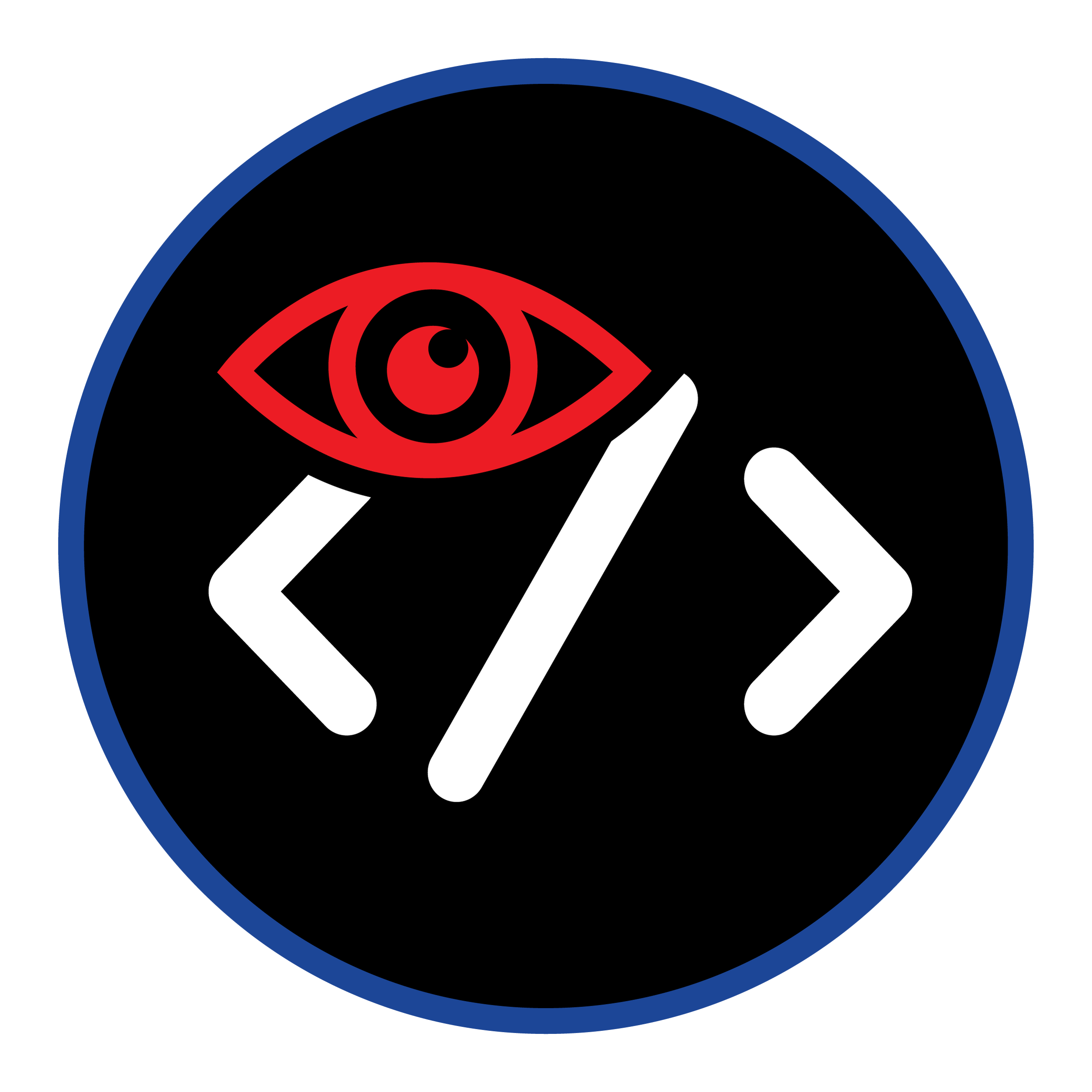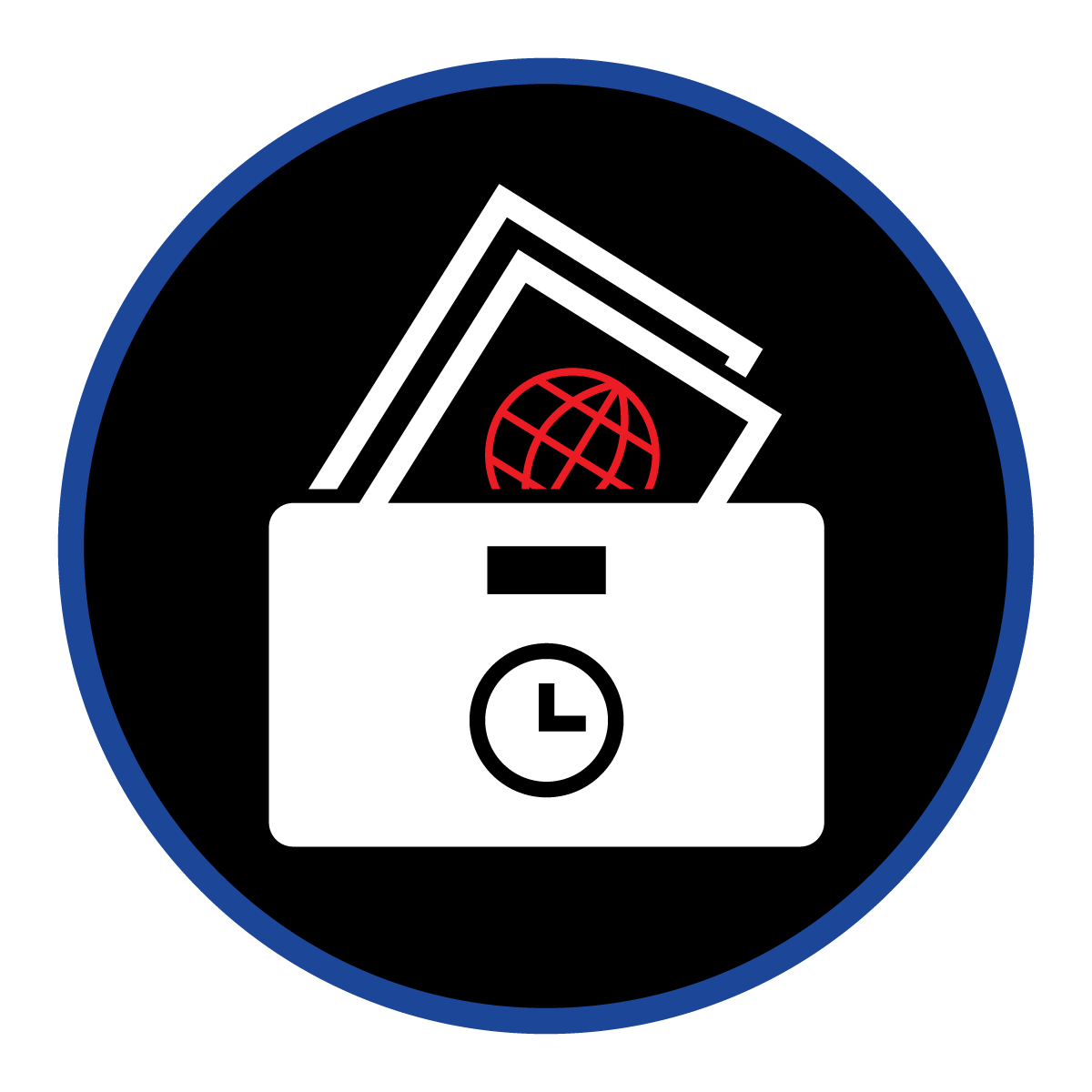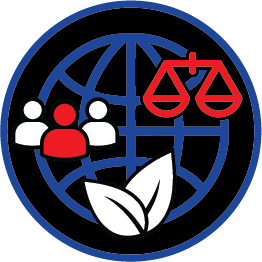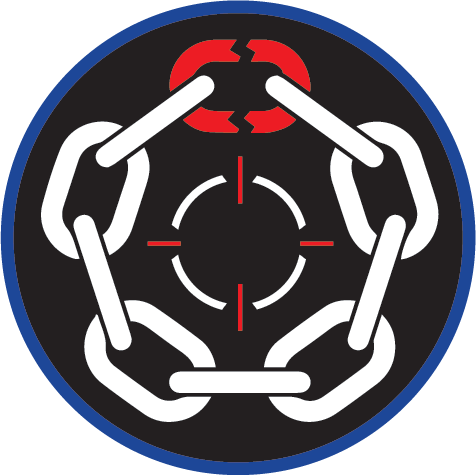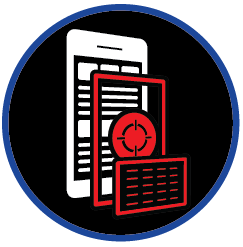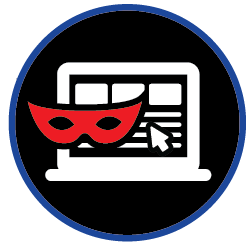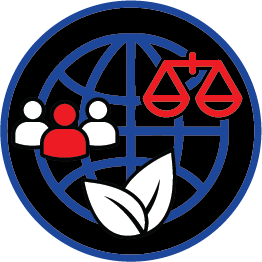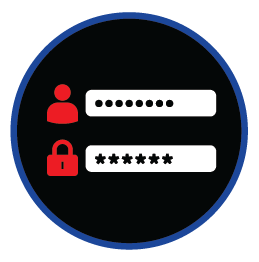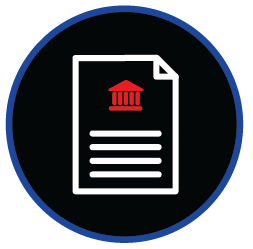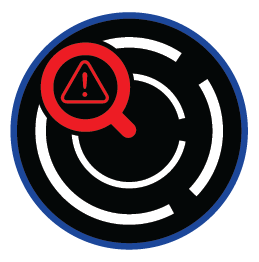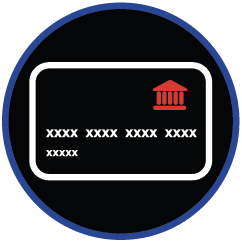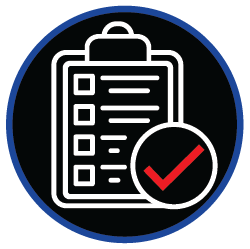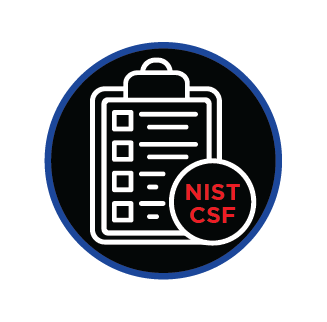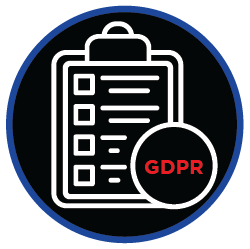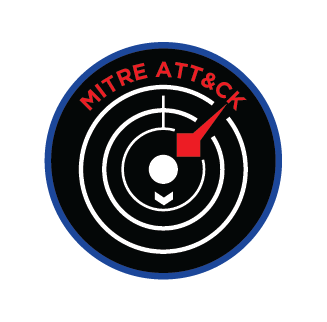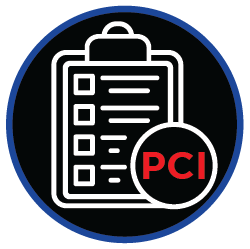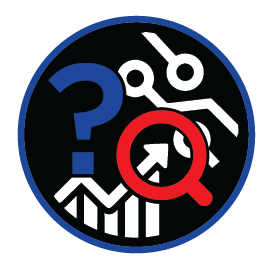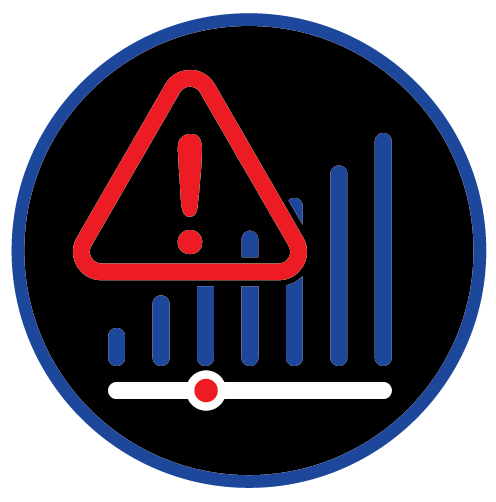
Digital Risk Protection (DRP)
Unify, Analyze, Conquer: ThreatNG's Holistic Approach to Digital Risk Management
ThreatNG's Digital Risk Protection offers superior digital risk discovery, assessment, monitoring, reporting, and intelligence because it offers a holistic view across a vast range of data sources, including the deep and dark web, SaaS applications, cloud environments, code repositories, archived web pages, and more. This allows them to identify vulnerabilities related to BEC/phishing susceptibility, data breaches, ransomware, web application attacks, subdomain takeovers, and brand damage. The platform continuously monitors these areas and provides ongoing reports to empower organizations to proactively manage risk across their digital ecosystem, including third-party vendors and supply chains.
Uncover Your Digital Blind Spots: ThreatNG's Multi-Layered Threat Detection
Dive deeper than surface-level security with a comprehensive view of your digital footprint and potential attack vectors
In today's complex digital landscape, traditional security measures often miss hidden threats lurking beneath the surface. ThreatNG goes beyond basic checks to provide a multi-layered approach to threat detection. By analyzing a vast array of data sources, ThreatNG exposes your organization's digital blind spots, including rogue subdomains, leaked credentials, and vulnerabilities within your technology stack. This comprehensive view empowers you to prioritize risks effectively and make data-driven decisions to safeguard your business.
Domain Intelligence
Mapping Your Digital Footprint: Advanced techniques like DNS intelligence, subdomain discovery, and IP geolocation help uncover hidden assets, misconfigured cloud buckets, and even exposed APIs, development environments, and VPNs that attackers could exploit. Additionally, known vulnerabilities within your technology stack are factored in to prioritize risks.
Cloud and SaaS Exposure
Cloud and SaaS Security Assessment: Your cloud environment is assessed for security risks, including identifying unauthorized cloud accounts (shadow IT), cloud service impersonations, and open cloud storage buckets. The vast landscape of SaaS applications you use is also examined to provide insights into potential security risks associated with those vendors.
Sensitive Code Exposure
Guarding Sensitive Code: Public code repositories like Github are scoured for leaks of sensitive information like passwords, API keys, or configuration files. Mobile apps associated with your organization are also examined for vulnerabilities that could expose user data.
Online Sharing Exposure
Code-sharing platforms like Pastebin or Gist are scanned to uncover any leaked credentials, sensitive documents, or code snippets containing sensitive information about your organization.
Sentiment and Financials
Looking Beyond Technical Vulnerabilities: News articles, social media sentiment, and SEC filings are analyzed to identify potential financial risks, lawsuits, or employee dissatisfaction that could lead to security incidents. It also examines a company's ESG (Environmental, Social, and Governance) violations, which can sometimes indicate broader risk management weaknesses.
Archived Web Pages
Unearthing Historical Threats: Archived webpages of your organization's online presence are analyzed to uncover historical vulnerabilities or data leaks that may still be exploitable. This includes archived code, configuration files, and even login pages that could contain exploitable information.
Dark Web Presence
Dark Web Monitoring: The dark web is monitored for mentions of your organization, its employees, or associated technologies. This helps identify potential breaches, ransomware attacks involving stolen data, or the sale of compromised credentials on underground marketplaces.
Technology Stack
Understanding Your Technology Stack: Identify the specific technologies used by your organization (accounting tools, CRM, CMS, etc.). Understanding the technology stack can tailor risk assessments to known vulnerabilities within those platforms.
Search Engine Exploitation
Turning Search Engines into Allies: Search results identify potential weaknesses, such as misconfigured servers with sensitive information indexed, leaked user data, or mentions of persistent attacks targeting your technology stack.
Social Media
Social Media - Beyond the Surface: Analysis goes deeper than just monitoring posts. Content, hashtags, links, and tags are examined to identify potential brand reputation issues, data leaks through inadvertent social sharing, and even phishing attempts impersonating your organization.

Prioritize Risks, Protect Your Business: ThreatNG's Superior Context for Digital Threats
Understand the Real Impact of External Risks and Make Data-Driven Security Decisions
ThreatNG offers a superior business context for external digital risks due to its focus on external attack surface and digital risk intelligence. This translates to a better understanding of potential threats' real-world impact, allowing organizations to prioritize risks based on potential business outcomes. Here's a breakdown of how ThreatNG's capabilities provide superior business context:
BEC & Phishing Susceptibility
Effective phishing defense goes beyond simply identifying malicious domains. A comprehensive approach analyzes sentiment across online and dark web platforms. This allows businesses to determine whether phishing attacks specifically target them. Organizations can prioritize these threats more effectively by gauging the potential for financial loss or disruption. Furthermore, domain intelligence is crucial in identifying suspicious domains often used in phishing attempts.
Brand Damage Susceptibility
Assessing brand damage risk requires a comprehensive strategy. This approach goes beyond simply monitoring news articles. Sentiment analysis plays a vital role in identifying potential reputational issues. Additionally, Environmental, Social, and Governance (ESG) violations can sometimes signal broader risk management weaknesses. These weaknesses could leave a company vulnerable to security incidents that could further damage its reputation. By considering all these factors, businesses can proactively safeguard their brand and mitigate potential crises.
Breach & Ransomware Susceptibility
ThreatNG's analysis considers a broader range of factors than just vulnerabilities. Exposed ports, dark web mentions of compromised credentials, and the overall attack surface all contribute to the likelihood of a ransomware attack. This allows businesses to prioritize resources and invest in security measures to prevent costly ransomware attacks.
Cyber Risk Exposure
Effective cybersecurity goes beyond just patching vulnerabilities. ThreatNG employs a comprehensive approach, considering a broader range of factors to create a complete picture of your cyber risk landscape. This includes exposed sensitive ports that attackers could exploit, leaked code containing sensitive information, lax cloud security practices, and even compromised credentials circulating on the dark web. By analyzing these diverse data points, businesses can make informed decisions about resource allocation. This allows them to prioritize security investments based on potential financial losses or operational disruptions, strengthening their overall cybersecurity posture.
Data Leak Susceptibility
Understanding the likelihood and potential impact of a data leak is crucial for prioritizing data security efforts. ThreatNG’s comprehensive approach analyzes multiple data sources. This includes cloud storage buckets misconfigured or compromised by unauthorized access, exposed code repositories where sensitive information might be leaked, and even mentions of compromised credentials on the dark web. By taking a holistic view of these potential vulnerabilities, businesses can prioritize data security measures and minimize the risks of financial penalties or customer churn.
ESG Exposure
ESG violations can sometimes indicate broader risk management weaknesses that could lead to security incidents. ThreatNG considers ESG factors, sentiment analysis, and financial health to provide a more comprehensive picture of an organization's overall risk posture. This allows businesses to identify and address potential ESG weaknesses before they escalate into security incidents that could damage their reputation or financial performance.
Supply Chain & Third Party Exposure
Identifying third-party vendors with weak security practices or outdated technology can expose the organization to cyberattacks. ThreatNG's analysis of third-party vendor domain intelligence, technology stacks, and cloud usage helps businesses understand their supply chain risks and make informed decisions about vendor selection and risk mitigation strategies.
Mobile App Exposure
Analyzes mobile apps available in marketplaces for embedded secrets, such as API and private keys, that threat actors could weaponize. The rating provides an essential external view of the mobile app attack surface, helping to detect and mitigate risks that could lead to data breaches or brand impersonation.
Non-Human Identity (NHI) Exposure
Protect your digital footprint from high-consequence identity breaches by actively hunting for non-human identity (NHI) credentials and exposed system email addresses (e.g., jenkins@ or svc@) across compromised data sets. This specialized rating applies Legal-Grade Attribution to quantify the business impact of leaked credentials, providing the certainty required for executive action.
Subdomain Takeover Susceptibility
A comprehensive analysis of subdomains, leveraging techniques like domain intelligence, helps identify forgotten or misconfigured ones. Attackers can exploit these vulnerabilities to host malicious content or redirect users to phishing sites. This can damage the organization's reputation and lead to potential financial losses.
Web Application Hijack Susceptibility
Leveraging domain intelligence, a comprehensive analysis maps your organization's entire web application footprint. This includes identifying all subdomains and potential entry points for attackers. This detailed view allows for a thorough assessment of vulnerabilities. It considers both the exploitability of each vulnerability and its potential impact, such as compromised website functionality or data breaches.

ThreatNG: Actionable Intelligence for Superior Digital Risk Management
Minimize Financial Losses, Protect Data, and Safeguard Reputation
ThreatNG excels in digital risk assessment because its comprehensive intelligence repositories go beyond providing data. They deliver actionable business insights that empower businesses to make informed decisions about security investments. These insights are crucial for achieving the most desired business outcomes, such as minimizing financial losses, protecting customer data, and safeguarding brand reputation. Let's delve into why each specific intelligence repository within ThreatNG is valuable:
Dark Web
ThreatNG goes beyond surface web vulnerabilities. It monitors the dark web for mentions of the organization, its employees, or its technology stack. This allows for early detection of potential breaches, ransomware attacks targeting the organization's data, or the sale of compromised credentials that could be used for account takeover attempts. This advanced warning allows businesses to mitigate the damage and limit financial losses.
ESG Violations
ESG violations can indicate underlying weaknesses in an organization's risk management practices, which can make the organization more susceptible to cyberattacks. By analyzing ESG violations alongside other risk factors, ThreatNG helps businesses identify potential security risks before they escalate into costly incidents. This proactive approach can save businesses money and protect their reputations.
Ransomware Events
Understanding the ransomware landscape is crucial for businesses. ThreatNG analyzes documented ransomware events and chatter about specific organizations on the dark web. This allows businesses to assess the likelihood of a ransomware attack and prioritize resources towards strengthening their defenses. By understanding the tactics used by ransomware attackers targeting similar businesses, organizations can implement more effective security measures and potentially avoid costly downtime or data breaches.
Compromised Credentials
Compromised credentials are a significant risk factor for cyberattacks. ThreatNG monitors the dark web and other sources for leaked credentials associated with the organization or its third-party vendors. Early detection of compromised credentials allows businesses to take immediate action, such as resetting passwords and implementing stricter access controls. This proactive approach can prevent attackers from exploiting compromised credentials to access sensitive systems or data.
Mobile Applications
Identify and mitigate risks related to the mobile app ecosystem. By continuously monitoring and analyzing the mobile apps linked to the organization, security teams can proactively detect potential threats, such as data leakage, brand impersonation, or compliance violations. This information allows organizations to build their brand reputation, customer trust, and sensitive data.
SEC Form 8-Ks
Strengthen your defenses against emerging cyber threats by leveraging a unique source of cybersecurity intelligence. Publicly traded companies' disclosures of significant cyber incidents provide insights into real-world attack patterns, vulnerabilities, and mitigation strategies. This valuable information can help you proactively address digital risks and enhance your organization's security.
Known Vulnerabilities
Known vulnerabilities are a constant threat. ThreatNG maintains a comprehensive database of known vulnerabilities and prioritizes them based on exploitability and potential impact. This allows businesses to focus their patching efforts on the vulnerabilities that pose the most significant risk. By prioritizing vulnerabilities effectively, organizations can optimize their security posture and minimize adversaries' attack surface.
Bank Identification Numbers (BINs)
ThreatNG maintains a comprehensive BIN repository to help uncover broader leaks within information-sharing platforms containing BINs alongside other compromising data like usernames, passwords, or social security numbers. This contextual analysis allows ThreatNG to flag these leaks for further investigation and prioritize potential security risks so that organizations can provide a more holistic view of possible security threats.
Bug Bounty Programs
Serves as a proactive early warning system, offering insights into vulnerabilities found in other organizations. This allows security teams to address similar risks before they can be exploited. Organizations can enhance their threat intelligence and anticipate emerging attack patterns by analyzing the types of vulnerabilities typically identified in bug bounty programs. This understanding helps strengthen defenses and refine digital risk protection strategies, enabling organizations to stay ahead of the changing threat landscape.
External Adversary View
Digital Risks Aren't Just Data Points. They're an Attacker's Playbook.
Protecting your digital presence involves tracking numerous external risks, including typosquatted domains, compromised credentials on the dark web, and brand impersonations. But to an attacker, these aren't separate issues—they are the interconnected building blocks of a campaign. The ThreatNG External Adversary View connects these disparate digital risks into a single, coherent attack path. We demonstrate how a typosquatted domain with active mail records, combined with harvested credentials, can launch a convincing phishing attack, mapping the entire scenario to frameworks like MITRE ATT&CK. This moves beyond abstract risk to show you the specific techniques adversaries use to harm your brand, allowing you to protect your digital presence with true adversarial intelligence.

External GRC Assessment
Proactive GRC: Transforming Digital Risk into Compliance Certainty
Digital risks extend beyond immediate threats; they often highlight underlying compliance deficiencies. ThreatNG's External GRC Assessment directly complements our Digital Risk Protection by translating identified external threats and brand impersonations into actionable compliance insights. This allows your organization to move from reactive audit responses to continuous, proactive compliance, ensuring that your digital footprint aligns with regulatory requirements and significantly reduces your overall risk exposure.

Holistic View, Stronger Security: ThreatNG Safeguards Your Business Ecosystem
Proactive Threat Detection and Reduced Risk
ThreatNG's strength lies in its comprehensive discovery and assessment capabilities. It scans various sources, including the web, social media, and code repositories, to identify vulnerabilities before attackers can exploit them. This proactive approach helps uncover threats like BEC/phishing attempts, data breaches, ransomware attacks, and reputational risks. By mitigating these threats beforehand, organizations can prevent costly security incidents, minimize downtime, and protect sensitive data. Ultimately, this translates to improved business continuity, reduced financial losses, and a stronger brand reputation.
Continuous Monitoring and Improved Decision-Making
Continuous monitoring of the digital landscape keeps organizations informed of evolving threats and potential risks. By consolidating all this information into actionable insights through its reporting facility, ThreatNG empowers security teams to stay ahead of emerging threats. This translates to informed decisions about resource allocation and security posture, leading to a more efficient security operation and faster response times to incidents.
Holistic View and Stronger Supply Chain Security
ThreatNG's Digital Risk Protection (DRP) goes beyond the organization's walls, extending its assessment to third-party vendors and the entire supply chain. This comprehensive approach includes monitoring for compromised credentials, cloud misconfigurations, and data leaks within the ecosystem. By gaining a holistic view of digital risk across the entire network, organizations can ensure the overall resilience of their partnerships. This proactive strategy reduces the risk of third-party breaches impacting the organization and fosters stronger business relationships with reliable partners.

Discover and Inventory
Unveiling the Unseen: ThreatNG's Unparalleled Depth and Continuous Watch for Digital Threats
Traditional security measures often leave blind spots. ThreatNG shatters this limitation with its unparalleled depth of data sources. It goes beyond the basics, scouring social media, code repositories, archived data, and even the dark web to uncover hidden risks across your entire digital ecosystem. ThreatNG doesn't stop at identifying exposed assets; it delves deeper, analyzing leaked code, social media sentiment, and search engine data to understand the potential impact of vulnerabilities. This comprehensive approach, including third-party vendors, paints a complete picture of your risk landscape. Furthermore, ThreatNG's continuous monitoring ensures you stay ahead of evolving threats and potential attacks within your supply chain, allowing for proactive risk mitigation.
Unmatched Breadth of Data Sources: ThreatNG goes beyond traditional sources like domain names and IP addresses. It scours social media, code repositories, archived webpages, the dark web, and even financial filings (SEC disclosures) to uncover hidden risks. This comprehensive approach paints a complete picture of an organization's digital footprint and potential vulnerabilities across its entire ecosystem, including third-party vendors and suppliers.
Deep Analysis of Exposed Information: ThreatNG doesn't just identify exposed assets; it delves deeper. It analyzes social media sentiment, leaked code for sensitive information, and search engine-indexed data for potential weaknesses like misconfigured servers or publicly accessible credentials. This in-depth analysis helps organizations understand the potential impact of a discovered risk.
Continuous Monitoring for Emerging Threats: ThreatNG isn't a one-time scan. It continuously monitors the digital landscape for changes and new threats. This allows organizations to stay ahead of evolving vulnerabilities and potential attacks within their supply chain, including the addition of new risky vendors or compromised credentials appearing on the dark web.
Assess and Examine
Beyond the List: ThreatNG Prioritizes Real Risks with Contextual Analysis and Supply Chain Insights
Not all threats are created equal. ThreatNG understands this. It goes beyond simply listing vulnerabilities and delving into contextual threat analysis. Analyzing information from various sources assesses the severity of vulnerabilities, their exploitability based on exposed information, and the potential impact on the organization. This allows for a more actionable picture of actual risks. ThreatNG further empowers effective mitigation with risk prioritization. It prioritizes vulnerabilities based on impact and exploitability, allowing organizations to focus resources on the most critical issues. Finally, ThreatNG recognizes the interconnectedness of today's digital landscape. Its supply chain risk assessment analyzes the security practices of third-party vendors, providing a holistic view of potential risks and fostering a more resilient overall security posture.
Contextual Threat Analysis: ThreatNG goes beyond simply identifying vulnerabilities. It analyzes information gathered from various sources (domain intelligence, social media, code repositories, etc.) to understand the context of potential threats. This means assessing factors like the severity of vulnerabilities, their exploitability based on exposed information, and their potential impact on the organization's reputation or finances. This contextual analysis provides a more actionable picture of actual risk.
Risk Prioritization for Effective Mitigation: ThreatNG doesn't overwhelm users with a list of every possible risk. It prioritizes identified vulnerabilities based on their potential impact and exploitability. This prioritization allows organizations to focus on addressing the most critical risks first, optimizing their security posture, and maximizing the return on their investment in DRP.
Supply Chain Risk Assessment: ThreatNG extends its assessment beyond the organization itself. It analyzes third-party vendors' and suppliers' digital footprint and security practices within the supply chain. This holistic assessment helps identify potential risks that could originate from external partners, allowing organizations to take steps to mitigate them and build a more resilient overall ecosystem.

Report and Share
Targeted Insights, Actionable Intelligence: ThreatNG Empowers Informed Decisions Across Your Organization
Effective risk management thrives on clear communication and actionable intelligence. ThreatNG delivers both. It moves beyond generic reports, tailoring them to specific audiences. Executives receive high-level summaries with critical findings, allowing them to grasp the overall risk posture. Meanwhile, technical teams get in-depth reports with actionable recommendations and prioritized vulnerabilities, empowering them to take immediate action. ThreatNG doesn't stop there; comprehensive inventories provide a complete view of all discovered assets and risks, including third-party vendors. This holistic approach ensures everyone has the information they need to make informed decisions and safeguard your organization's digital landscape.
Tailored Reports for Different Audiences: ThreatNG doesn't offer a one-size-fits-all report. They cater reports to different audiences. Executives receive high-level summaries with key findings and overall risk posture, while technical teams get detailed reports with specific vulnerabilities and remediation steps. This ensures everyone gets the information they need in a digestible format for informed decision-making.
Actionable Insights with Prioritization: ThreatNG reports go beyond just listing vulnerabilities. They prioritize identified risks based on severity and exploitability. This prioritization helps organizations focus on addressing the most critical issues first. The reports also include actionable recommendations and remediation steps, allowing teams to take immediate action and improve their security posture.
Comprehensive Inventory for Complete Visibility: ThreatNG reports provide an extensive inventory of all discovered assets and risks across the entire ecosystem, including the organization and third-party vendors. This inventory allows for a better understanding of the attack surface and facilitates ongoing monitoring efforts. Organizations can make informed decisions about resource allocation and risk mitigation strategies by having a complete picture of all risks.
Continuous Visibility
Stay Ahead of Threats: ThreatNG's Continuous Monitoring & Prioritization for Optimal Security
Staying ahead of ever-evolving threats requires constant vigilance. ThreatNG tackles this challenge with continuous monitoring and automated threat analysis. It goes beyond periodic scans, constantly scrutinizing the digital landscape for changes and newly discovered threats across all its areas of expertise, from domain intelligence to social media. This continuous monitoring allows for immediate detection of emerging risks like compromised credentials appearing on the dark web or brand impersonation attempts on social media. Furthermore, ThreatNG automates threat identification and prioritization, freeing up security analysts and ensuring consistent monitoring. Organizations can optimize their response and effectively safeguard their digital presence by focusing on critical issues.
Continuous Monitoring: ThreatNG goes beyond periodic scans. It continuously monitors the digital landscape for changes and newly discovered threats across all the mentioned areas (domain intelligence, social media, code repositories, etc.). This allows for immediate detection of emerging risks such as compromised credentials appearing on the dark web or brand impersonation attempts on social media. Alerts inform organizations and allow quicker responses to potential threats.
Automated Threat Identification and Prioritization: ThreatNG automates identifying threats and vulnerabilities across the entire ecosystem. This reduces the burden on security teams and ensures consistent monitoring. Furthermore, ThreatNG prioritizes identified threats based on their severity and potential impact. This prioritization allows security teams to focus on addressing the most critical issues first, optimizing their response, and maximizing the effectiveness of their security posture.
Comprehensive Change Tracking and Inventory Updates: ThreatNG continuously tracks changes within the organization's digital footprint and supply chain. This includes changes in domain names, subdomains, cloud services used, and third-party vendors. By keeping this inventory up-to-date, organizations can ensure they have a complete picture of their attack surface and avoid blind spots that attackers could exploit. This continuous monitoring allows for a proactive approach to risk management, enabling organizations to adapt their security measures as their digital landscape evolves.

Empower Informed Decisions, Strengthen Security: ThreatNG's User-Centric Risk Management
Leverage role-based access, dynamic evidence gathering, and centralized policies for a collaborative and efficient approach to digital risk mitigation
Effective risk management requires comprehensive threat detection and a user-centric approach that empowers informed decision-making. ThreatNG goes beyond simply reporting risks. It provides role-based access control (RBAC), ensuring users see relevant information about their role. Dynamically generated questionnaires prompt teams to gather additional context, fostering collaboration across security, IT, and legal teams. Additionally, centralized policy management allows organizations to define consistent risk assessment practices across the entire ecosystem, including third-party vendors. This collaborative and user-centric approach empowers informed decisions and strengthens your organization's security posture.
Role-Based Access Control (RBAC)
ThreatNG uses RBAC to grant users access to information and functionality based on their role within the organization. This ensures that everyone has the information they need to do their job effectively, while still protecting sensitive data. For instance, executives might see high-level risk summaries, while security analysts can access detailed vulnerability reports and remediation steps. This focused access streamlines workflows and reduces information overload.
Dynamically Generated Correlation Evidence Questionnaires
ThreatNG goes beyond static reports. It generates dynamic CEQs tailored to the specific risks identified. These questionnaires prompt users to gather additional context and evidence to assess the severity and urgency of a potential threat. This collaborative approach ensures all relevant teams (security, IT, legal) are involved in the decision-making process, leading to more informed and well-rounded risk mitigation strategies.
Centralized Policy Management for Consistent Risk Management
ThreatNG allows organizations to define and enforce centralized risk management policies across their entire ecosystem, including third-party vendors. This ensures consistency in how risks are identified, assessed, and prioritized. The platform can also track compliance with these policies, allowing organizations to identify areas where improvements must be made and hold vendors accountable for their security posture. This centralized approach fosters better collaboration between internal teams and external partners, leading to a more robust overall security posture.
Digital Risk Protection (DRP) Use Cases
Explore the various use cases for Digital Risk Protection (DRP) and how it can benefit your organization's security posture. In today's digital age, businesses are increasingly vulnerable to cyber threats, which can lead to data breaches, financial losses, and reputational damage. At ThreatNG, we specialize in providing advanced solutions for DRP, and we're excited to share our expertise with you. Our platform offers a range of powerful features that can help you detect and respond to threats across various digital channels. So, click through to learn more about how the ThreatNG Security Platform can help you safeguard your organization against digital risks and ensure peace of mind.






